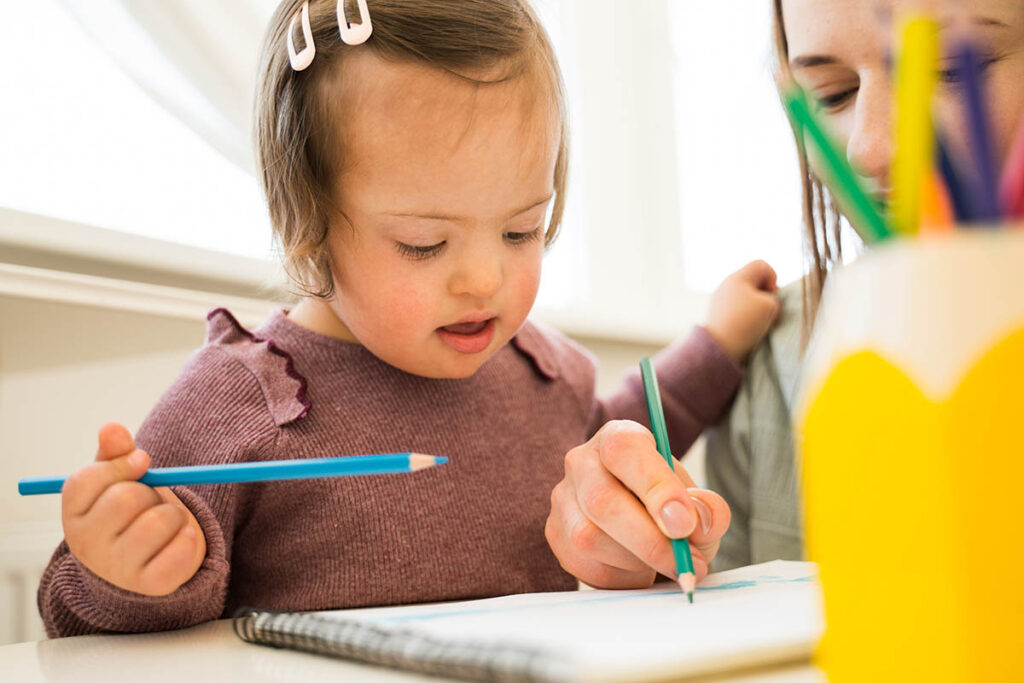As a parent of a child with autism spectrum disorder (ASD), you understand how vital functional communication activities are in enabling your child to connect and communicate with the world around them. However, identifying activities that promote functional communication may be challenging.
At A Gem of Joy, we offer caregivers and parents functional communication training to help you and your child improve communication skills and enhance their quality of life. Give us a call today at 888.501.6641 to begin your family’s partnership with us!
Why Is Functional Communication Training Important?
Functional communication training (FCT) plays a crucial role in enhancing the lives of individuals with ASD. It provides them with the tools and strategies they need to express themselves effectively and meaningfully within their environment. This training is more than just teaching how to speak or use sign language.
It’s about enabling these individuals to communicate their needs, desires, and feelings in a manner that others can understand. With improved communication abilities, they may experience less frustration, develop better relationships, and fully engage in their communities. This could lead to an improved quality of life, fostering a sense of independence and personal fulfillment.
FCT can help parents and caregivers by providing them with the necessary techniques to support and encourage their child’s communication development. By incorporating functional communication activities into daily routines, parents can create opportunities for their children to practice and improve their skills in a natural setting.
6 Functional Communication Activities for Individuals with Autism
Here are six functional communication activities that you can incorporate into your daily routine with your child to boost their communication skills:
1. Social Story Activities
Social story activities are short narratives that describe specific situations or activities. These narratives aim to educate learners on everyday activities, interactions, and experiences that learners may struggle with. Social stories are custom-made for your learner to ensure the information is relevant to their needs. Parents can use social stories to teach learners appropriate social skills, reduce anxiety, and promote independence.
2. Picture Exchange Communication System (PECS)
PECS is an effective communication tool, especially for non-verbal learners. This system consists of a set of picture symbols that the learner can use to communicate their wants and needs. The learner can provide the picture symbol to the communication partner, who then provides the desired item or action. The goal of the PECS system is to transition the learner from using picture symbols to more conventional communication methods, such as verbal communication.
3. Video Modeling
Video modeling is another functional communication activity that you can use to teach your child new communication skills. This activity involves showing the learner a recorded demonstration of the behavior you wish them to learn. The learner then watches the video and attempts to replicate the behavior or skill.
4. Visual Schedules
Visual schedules help to provide a visual representation of the day’s events or activities. This system can be customized to fit the learner’s preferences and needs. Visual schedules are particularly useful for learners because they function as a visual aid, promoting understanding and reducing anxiety associated with transitions. Parents can use visual schedules to sequence daily routines, provide step-by-step instructions, and introduce new activities.
5. Joint Attention Activities
Joint attention refers to the shared focus that two or more people have while engaging in communication or play activities. This activity type promotes functional communication by enhancing the interaction between the communication partners. Joint attention activities can teach learners the necessary skills to initiate and engage in conversations, interpret nonverbal communication cues, sustain attention, and focus on communication partners.
6. Music Therapy
Music therapy can be beneficial as a functional communication activity for learners. This therapy provides a nonverbal form of communication that is enjoyable and helps to bypass communication barriers. Music activities can enhance communication and help learners express their emotions, preferences, and desires in ways that words alone cannot.
Benefits of Functional Communication Training
FCT has far-reaching benefits that extend beyond mere communication improvements. Those benefits may include:
- It can help learners integrate into their communities by fostering meaningful relationships with peers and adults.
- FCT may reduce challenging behaviors, as individuals can effectively communicate their needs, reducing frustration.
- The ability to communicate effectively can empower learners, resulting in improved self-confidence and independence.
- It offers caregivers and educators insights into the world of individuals with autism, fostering empathy and understanding. This mutual understanding can lead to more fulfilling relationships and a better quality of life for individuals with autism.
- FCT can provide learners with a platform for them to express themselves and be understood by others.
This sense of self-expression and understanding can lead to improved mental health and well-being.
Contact A Gem of Joy to Learn More About Functional Communication Training
Don’t hesitate to reach out to us at A Gem of Joy to find out more about functional communication training. We’re here to provide you with the necessary resources and support to aid your child’s communication development. Our team of compassionate professionals is ready to guide you and your child on this journey.
Remember, the first step toward improved communication abilities is a simple phone call away. Contact us at 888.501.6641 today and let us help you unlock your child’s potential.

